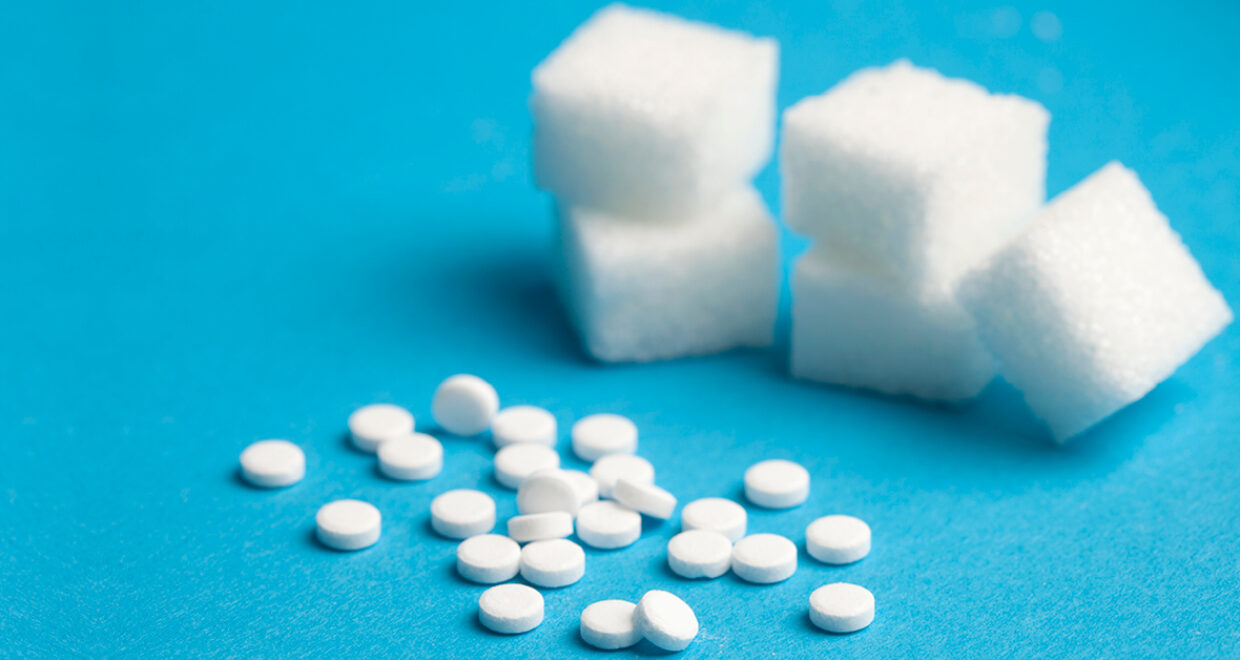Sweet Expectations: Can Artificial Sweetener Consumption during Pregnancy Impact Weight in the Next Generation?
The blog is written by author Clare M Reynolds, PhD; School of Public Health, Physiotherapy and Sports Science/Conway Institute, University College Dublin, Republic of Ireland and is published by the British Journal of Nutrition
The blog post relates to a paper published in British Journal of Nutrition – Consumption of artificial sweeteners during pregnancy and the risk of overweight in the offspring.
Childhood overweight and obesity rates continue to rise globally, increasing the risk of chronic health problems such as diabetes, cardiovascular disease and mental health issues. There is therefore a continuing quest to generate realistic strategies to manage weight and promote health. Over the last decade, artificial sweeteners have become a common feature in many weight-loss diets. These ‘sugar free’ or ‘diet’ alternatives offer reduced calories without sacrificing flavour or sweetness. The introduction of ‘sugar taxes’ in many countries has resulted in reformulation of many beverages to reduce overall sugar content and increasing artificial sweeteners. Artificial sweeteners are not limited to beverages but also found in a range of products marketed to the health conscious such as flavoured waters, yogurts, protein bars, vitamin supplements, chewing gum and sauces. However, despite their appeal, there is emerging evidence to suggest that these compounds are not necessarily innocuous. In 2023, the World Health Organization issued guidelines suggesting that artificial sweeteners are not recommended for weight loss or reducing risk for diseases such as diabetes or heart disease. This stems from research in human populations and experimental models that has shown potential effects in terms of cancer concerns, weight gain and alterations in gut bacteria.
Over the last four decades there has been an increasing appreciation for the impact of early life exposures in shaping the long-term health of the child. Existing evidence on the impact of exposure to artificial sweeteners during pregnancy has yielded mixed results. Some studies have reported increased risk of infant and childhood overweight while others show no clear association. Potential mechanisms include changes in the gut microbiome, metabolic programming and altered taste preferences. What is clear is that artificial sweeteners can cross the placenta into the fetal circulation highlighting the potential to influence early metabolic programming and developmental pathways that shape long-term health outcomes.
A recent study in the British Journal of Nutrition, examined data from the Danish National Birth Cohort (DNBC) and raises further questions about the long-term effects of consuming artificially sweetened beverages during pregnancy on offspring weight outcomes from birth up to 18 years of age. The study included over 66,000 mother-child dyads from pregnancies that were not complicated by diabetes. They showed that high consumption of artificially sweetened beverages, at least one a day during pregnancy, increased the odds of overweight in the child at 7, 11 and 18 years of age but not during infancy when compared to women who did not report consuming artificial sweeteners. These associations held even after factors that are known to influence offspring weight (smoking, physical activity, breastfeeding duration and socioeconomic status) were taken into consideration. Interestingly, women who were high consumers of sugar sweetened beverages (SSB) during pregnancy had offspring with lower odds of becoming overweight at 11 and 18 years of age.
When looking at these results it is worth noting, that women who consumed more artificially sweetened beverages tended to have higher BMIs, were more likely to smoke, breastfeed for shorter durations, and had lower socioeconomic status compared to those who didn’t—factors that could independently contribute to childhood obesity. Conversely, SSB consumers in this cohort had higher socio-economic status and healthier profiles overall, suggesting potential residual confounding. Though counterintuitive, this finding likely reflects broader lifestyle and socioeconomic differences between consumers rather than a protective effect of sugar itself. Another thing to consider is effect sizes were modest and timing of observed impacts—emerging later in childhood—raises the possibility of cumulative or “second hit” effects where postnatal lifestyle factors compound prenatal exposures. Alternatively, the later onset could be tied to the fact that as , over time, the dietary habits and lifestyle behaviours of children become increasingly independent of their parents and that height stabilises by 18 years of age.
So, what should the takeaway message be? While these findings do not warrant dramatic dietary overhauls, they do contribute to a growing body of evidence suggesting that moderation is key—particularly during pregnancy. More research is needed to determine the safety and long-term effects of prenatal exposure to artificial sweeteners, especially as their use becomes more widespread. Until the research catches up with the sweetener industry, choosing water, milk, or unsweetened beverages during pregnancy might be the safest bet for long-term health.
For now, health practitioners and expectant mothers may want to consider the potential downstream effects of artificial sweetener consumption. Until we fully understand the long-term metabolic programming associated with non-nutritive sweeteners, caution and balance remain the wisest approach.
Read the full paper here.





